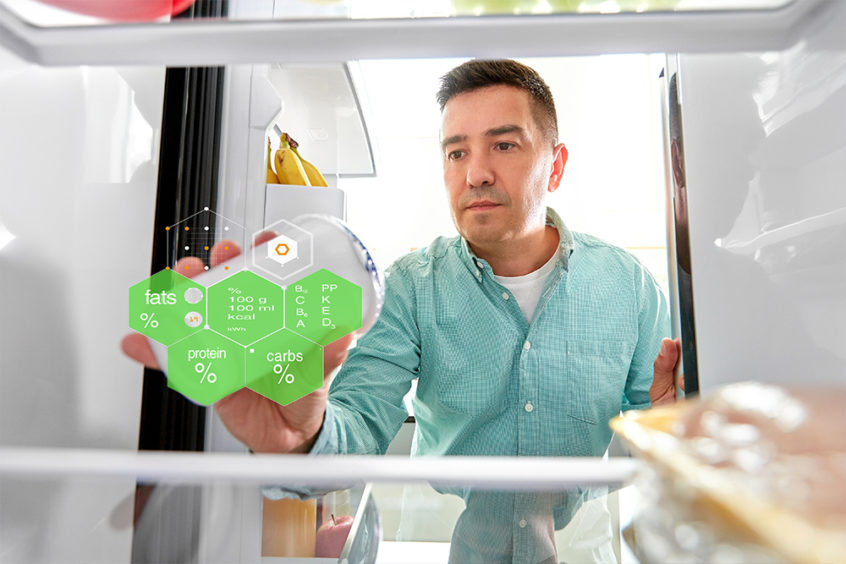Five Easy Blood Sugar Hacks

Symptoms of Insulin Dysregulation
Do you experience frequent food cravings and find yourself poking in the fridge throughout the day seeking something sweet? Have you been fighting the weight loss battle for years, but you just can’t lose weight?
These issues and others such as mood swings, menstrual irregularities, fatigue, acne, or brain fog, suggest that you may have a medical issue such as insulin resistance, PCOS, Diabetes, or fatty liver.
You are not alone. An increasing health risk that we all face is insulin dysregulation, which leads to inflammation and increased risks of many health conditions including cancer and cardiovascular disease.
What Is Insulin Dysregulation?
Insulin Dysregulation refers to the imbalance of the blood glucose levels in an individual’s body. Dysglycaemia, is the medical term for imbalances of high and low blood (serum) glucose. Hypoglycemia (low), hyperglycemia (high), insulin resistance, hyperinsulinemia, and diabetes are progressively worsening conditions primarily caused by dysglycaemia.
As frightening as we know these progressive diseases are, diet and lifestyle play key roles in improving blood sugar balance.
How Does Diet Impact Blood Sugar?
Most of the foods and drinks we ingest impact our body’s blood sugar levels. It is the level and timing at which the glucose enters the blood that can create issues for the body.
When you eat or drink foods that have carbohydrates — also known as carbs — your body breaks those carbs down into glucose (a type of sugar), which then raises the level of glucose in your blood. Your blood then carries that glucose to all of your body’s cells to use for energy. After your body breaks down those carbs into glucose, your pancreas releases insulin to help your cells absorb that glucose.
A poor diet, rich in carbs, will cause a person’s blood sugar levels to spike up and down throughout the day, taxing the system and leading to blood sugar dysregulation. A diet rich in fiber, fat, and protein will slow the release of carbohydrates and the levels of glucose into the system, resulting in a healthier, more even balance of blood sugar levels. See the chart below to see how foods affect blood sugar levels.
Let’s Talk About Sugar
Here’s something that may surprise you – all sugars are the same. Your body cannot tell the difference in sugar from table sugar, honey, agave syrup, brown sugar, coconut sugar, maple syrup, etc.
Sucrose is made up of the simple sugars glucose and fructose. Sucrose, glucose, and fructose are found naturally in many foods but are also added to processed products. Sucrose, glucose, and fructose are three types of sugar that contain the same number of calories gram for gram, but fructose causes more weight gain than glucose.
Both glucose and fructose inflame our bodies and age our cells, causing the problems listed above. And fructose is worse than glucose. So when eating or snacking it is better to choose savory over sweet.
Sugar triggers cravings and fatigue, as well as skin issues, leaky gut, insomnia, nighttime anxiety, estrogen dominance, hypothyroidism, cognitive performance, and other health conditions.
The processed food industry has done its best to hide this information from the public with its promotion of processed cereals for breakfast. In the nutritional labels, they list the calorie count as the most important consideration, while the sugar and starch content is what is most important. Products like Special K, Corn Flakes, and Cheerios lead to sugar and insulin spikes resulting in a blood glucose roller coaster with all-day cravings, irritability, and fatigue. We recommend a breakfast of greens, protein, and fiber.
What About Sweeteners?
Most artificial sweeteners are also of concern because they increase cravings for sweet foods just like regular sugar does. This happens as they cause a rise in insulin that then lowers blood sugar causing the craving.
Artificial sweeteners also harm our intestinal bacteria. Better sugar alternatives include Allulose, Monk Fruit, Erythritol, and Stevia. Avoid Aspartame, Maltitol, Sucralose, Xylitol, and Acesulfame-K. The best plan is to wean yourself off sweeteners, as they are addicting. Sweetness activates the addiction center in our brain. The more we eat it, the more we want it.
Blood Sugar Hacks to Reduce Insulin Spikes
Reducing insulin spikes by reducing the impact of sugar on our bodies will improve your health. I offer five methods to help with this
1) Eat Foods in the Right Order
You don’t have to totally avoid sugar, you just need to eat within a proper order. Glucose and fructose come from carbohydrates, especially those with a high glycemic index. So to keep your insulin in balance, start each meal or snack with fiber, protein, and fat, then you can enjoy sugars or starches. Have a salad or vegetable and protein before the sugar.
First thing in the morning our bodies are fasting and most sensitive to sugar. An ideal breakfast contains a good amount of protein, fiber, and fat with any starch or fruit eaten last. Protein can be found in Greek yogurt, tofu, meat, cold cuts, fish, cheese, protein powder, nuts and nut butter, seeds, and eggs.
Be careful with smoothies as blending fruit can pulverize the beneficial fiber, causing it to lose its full protective benefit and liberating the sugar to hit your system too quickly, resulting in a blood sugar and insulin spike. Avoid sugary fruit juice altogether.
The best time to eat something sweet is after a meal. So if you have the urge to indulge, save it for after your meal.
2) Increase Fiber
The more fiber you take the better. You should strive to take over 25 grams per day. Start slow and increase slowly to adapt to this. Fiber is what gives plants their structure. And the best sources are vegetables and not whole grains as in bread or cereal.
A useful product is PGX fiber supplement. Slowly work up to two to four grams per day of PGX, taken 15 to 20 minutes prior to meals with a full glass of water. This super fiber helps slow down the absorption of food, helping to lower blood sugar and cholesterol and feeding the healthy bacteria in our intestines. Other fiber sources include flax, nuts, legumes, and beans.
3) Take a Spoonful of Vinegar
A tablespoon of vinegar in a tall glass of water a few minutes (up to 20 minutes) before eating reduces the effects of sugar and insulin, thereby helping with cravings and hunger and burning more fat.
Common varieties of vinegar include red rice vinegar, red wine vinegar, sherry vinegar, balsamic vinegar, and apple cider vinegar. The most popular is apple cider. This will reduce visceral (stomach) fat, waist, and hip measurements, and triglyceride levels. Vinegar is more effective than many thermogenic supplements touted as fat burners.
Some concern has been expressed that vinegar could affect tooth enamel, so use a straw. Or add the vinegar to olive oil in your salad that you eat first with your meal. You can also drink it with a meal or up to 20 minutes after eating.
4) Exercise
Add movement after a meal. Sugar peaks in our system within 70 minutes after eating. Moving your muscles during this time can use up some of that sugar before it gets stored as fat. Try walking 10 to 20 minutes after eating. Most forms of exercise can help increase our mental well-being, energize us, help our heart health, and reduce inflammation and oxidative stress.
5) Eat Carbs with Fiber, Protein, or Fat
When you do enjoy carbs, add some fiber, protein, or fat to it. Add avocado to toast, spread nut butter over fruit, and eat some almonds before the croissant. Dried dates are some of the worse sugar bombs available. Dried fruit in general is not a good choice. Tropical fruits and grapes are also high in sugar with berries being the best choice.
Rice of every kind is full of starch. So add chopped herbs, nuts, or other protein to rice. Remember to combine fiber, protein, and/or fat with bread, corn, couscous, pasta, polenta, tortillas, cake, candy, cereal, cookies, crackers, granola, ice cream, or anything else sweet.
Never eat vegetables alone. Add avocado, beans, butter, cheese, cream, eggs, fish, greek yogurt, meat, nuts, or seeds.
A Note About Fats
This article would be incomplete without discussing fats and the difference between good fats and bad fats.
Good fats are saturated or solid at room temperature. They include fat from animals, butter, ghee, and coconut oil. Monounsaturated fats from fruits and nuts such as avocados, macadamia nuts, and olives can’t stand heat well but are best when added to salads or added after cooking.
Polyunsaturated and trans fats are the bad fats, which inflame our bodies. These fats include soybean oil, corn oil, canola oil, safflower oil, rice bran oil, and fried foods. Some fat added to our diet helps us to feel satiated. Avoid “low fat” foods.
Getting to Blood Sugar Balance
With the goal of treating the whole person, Dr. Fliedner includes functional medicine in his ob-gyn practice. One of the most important themes of functional medicine is avoiding insulin spikes from sugar and starches. If you would like Dr. Fliedner to test your insulin levels and treat you, please fill out our contact form or call our office at 469-455-1665.
For more information on how glucose affects our bodies, Dr. Fliedner recommends reading Glucose Revolution by Jessie Inchauspe, who also has a popular Instagram worth following @Glucose Goddess.
